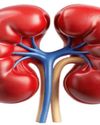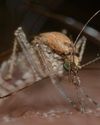Developmental challenges and some solutions for the Front Runner Covid-19 Vaccines
Scientific India
|September - October 2020
The emergence of SARS-COVID -19 pandemic has propelled Tthe biotech industry to accelerate the development of several biological modalities.

Some of the medical entities include but not limited to vaccines, nucleic acids, small molecules, convalescent serum, intravenous immunoglobulin (IgG) and monoclonal antibodies (mAbs) or their coformulation. Among them, vaccination is a preferred approach for prevention and treatment of COVID-19 induced disease, however the vaccine evolution is plagued by time constrains and manufacturing hurdles. The massive economic and social impact of corona virus has propelled the scientific and government organizations to accelerated the vaccine development. Figure 1 demonstrates multiple platforms of vaccine models targeted against the COVID-19 pandemic causing virus, amid that race two types of vaccine technologies appeared as front runners 1) Non-replicating viral vector (Gene therapy) and 2) Nucleic acid (mRNA) based, where the former delivers the target antigen to the antigen-presenting cells via adenoviral vector while the later via mRNA packed lipid nano-particles.
The vaccine candidates advanced through both platforms express neutralizing antibodies that target the spike protein of the coronavirus and inhibits its binding to the human ACE2 protein and prevent infection. ChAd Ox1 viral vector developed by University of Oxford in collaboration with AstraZeneca is the prime example of non-replicating gene therapy-based vaccine, while the Moderna's mRNA SARS COV-2 vaccine candidate (mRNA-1273) is an exemplary for nucleic acid-based vaccine.

This story is from the September - October 2020 edition of Scientific India.
Subscribe to Magzter GOLD to access thousands of curated premium stories, and 10,000+ magazines and newspapers.
Already a subscriber? Sign In
MORE STORIES FROM Scientific India
Scientific India
Japanese physicists were the first to measure the most tolerant entanglement state, the W state
There are many unusual things that happen in the world of quantum physics.
3 mins
September - October 2025

Scientific India
The Fifth Force: Could It Unlock the Secret of Dark Matter?
What if the universe is powered by a force we've never seen before? For centuries, science has explained nature with four fundamental forces.
3 mins
September - October 2025

Scientific India
A flu test you can chew
As flu season nears in the northern hemisphere, scientists are exploring a surprising new way to detect infection: through taste.
1 mins
September - October 2025

Scientific India
Lab-Grown Kidney Brings Artificial Organ Dream Closer to Reality
In a major leap toward bioengineered organ replacement, scientists have successfully grown human kidney 'assembloids' in the laboratory that mimic key structural and functional features of natural kidneys.
1 min
September - October 2025

Scientific India
Your pumpkin might be hiding a toxic secret
Pumpkins, squash, zucchini, and other members of the gourd family have a surprising trait: they can take up pollutants from the soil and store them in their edible parts.
1 mins
September - October 2025

Scientific India
2025 Nobel Prize in Physics Reveals Quantum Secrets in Superconducting Circuits
The 2025 Nobel Prize in Physics has been awarded to John Clarke, Michel H. Devoret, and John M. Martinis for their pioneering experiments that brought quantum mechanics from the invisible atomic world to the macroscopic scale a system large enough to hold in your hand.
1 mins
September - October 2025

Scientific India
Genomic Evidence Redefines the Evolutionary Age of Mosquitoes
A new genetic analysis has shaken up what we thought we knew about one of humanity's most notorious pests the mosquito.
1 min
September - October 2025

Scientific India
Nobel Prize in Chemistry 2025: Building Molecular Architectures with Room to Breathe
In a scientific breakthrough that bridges molecular design with planetary-scale problems, the 2025 Nobel Prize in Chemistry has been awarded to Susumu Kitagawa, Richard Robson, and Omar Yaghi.
1 mins
September - October 2025

Scientific India
Guardians of Immunity: Nobel Prize 2025 Honors Discoveries that Keep the Immune System in Check
The 2025 Nobel Prize in Physiology or Medicine has been awarded to Mary E. Brunkow, Fred Ramsdell, and Shimon Sakaguchi for their groundbreaking discoveries in the field of peripheral immune tolerance a crucial mechanism that prevents the body's immune system from turning against itself.
1 mins
September - October 2025

Scientific India
'Is cold nuclear fusion feasible?
In early May 1989, two chemists from the University of Utah, Pons and Fleischmann, arrived in Washington, U.S.A. The aim is to present their findings to members of the US Congress.
3 mins
September - October 2025
Translate
Change font size

